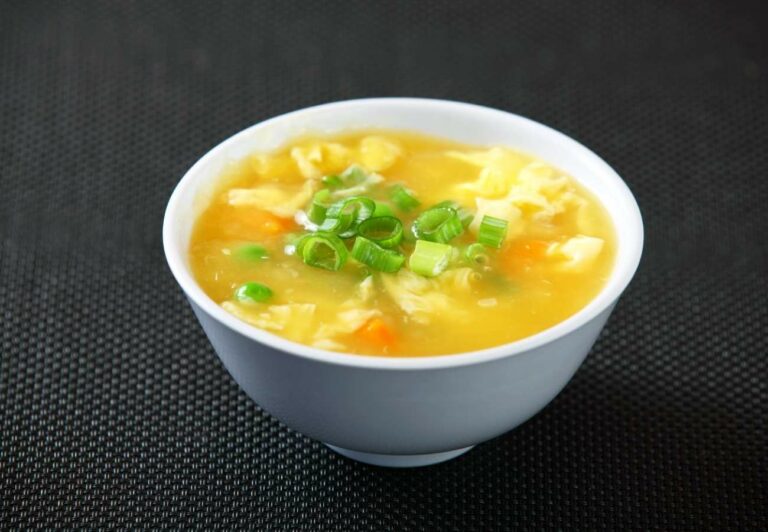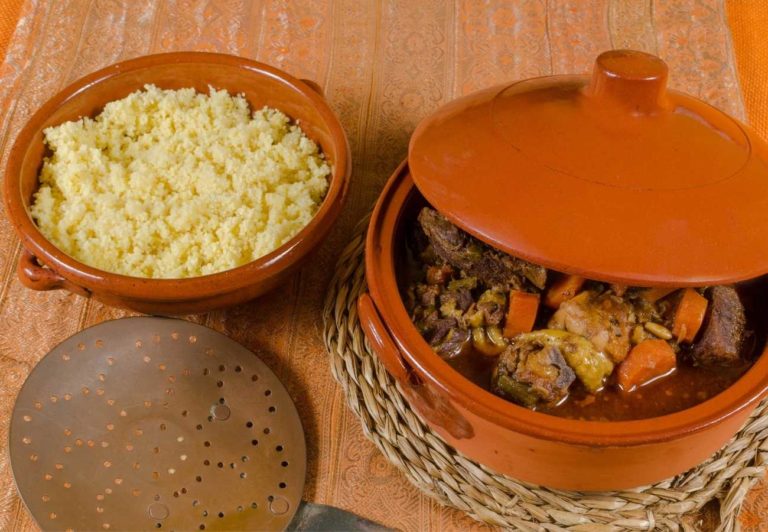Palestinian Food: 14 Dishes of Palestine
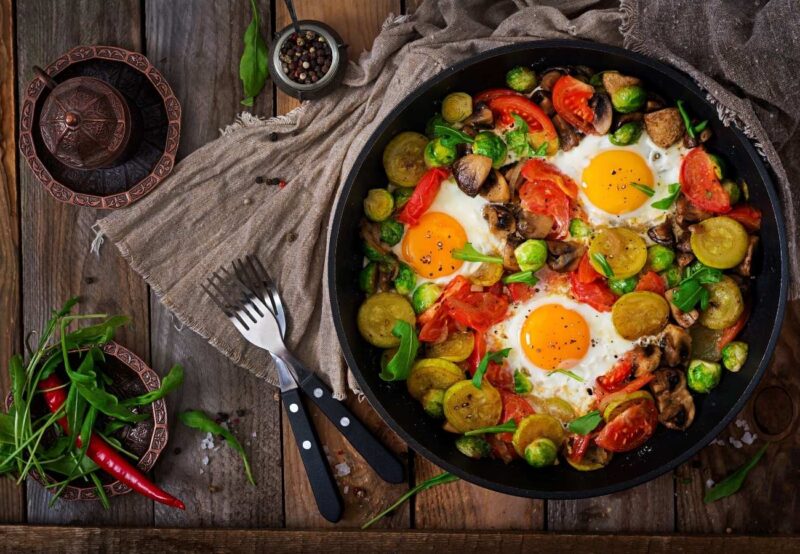
Palestine is an area in the eastern Mediterranean region, including parts of contemporary Israel, the Palestinian territories of the Gaza Strip (along the coast of the Mediterranean Sea) and the West Bank (west of the Jordan River). The area is considered a holy land in three of the world’s greatest religions: Christianity, Islam and Judaism.
The population of Palestine is made up of different ethnicities, including Arabs (86%), Jews (13%) and others. Palestinian food comprises of dishes commonly consumed by Palestinians, whether in Palestine, Israel, Jordan, refugee camps in neighbouring countries or by the Palestinian diaspora.
Palestinian cuisine is a combination of the cuisines of the civilizations that have settled in the area over the years. Cooking methods, recipes and ingredients involved are usually dependent on the climate, tradition and the location of the particular region.
Staples of Palestinian cuisine include rice (including dishes containing rice), hummus and falafel. Other commonly loved dishes include vine leaves and mashed vegetables (filled with rice and minced meat) and maqlouba.
Hummus

Hummus is a popular Middle Eastern dip prepared using chickpeas, tahini, lemon juice, garlic, salt, paprika and olive oil. It is packed with fiber and protein and is a staple in both Palestinian, Middle Eastern and Mediterranean cuisines.
Hummus is usually served with pita bread, kebabs, chicken, salads, chips and falafel wraps. Although the exact origin of hummus is still unknown, it is believed to have been consumed in the Middle East for thousands of years. As weel as from Palestinians, people in Lebanon, Jordan, Syria and Egypt also enjoy hummus.
Shakshuka

Shakshuka is a dish mainly prepared using poached eggs and tomatoes. Other ingredients include onions, garlic and many different spices. Many people also add vegetables of their choice to make it more filling.
Shakshuka translates to “a mixture” in English. Today, one can find many different variations of this dish, some of them also adding feta or goat cheese. Generally consumed for breakfast, it is a typical North African and Middle Eastern dish.
Falafel
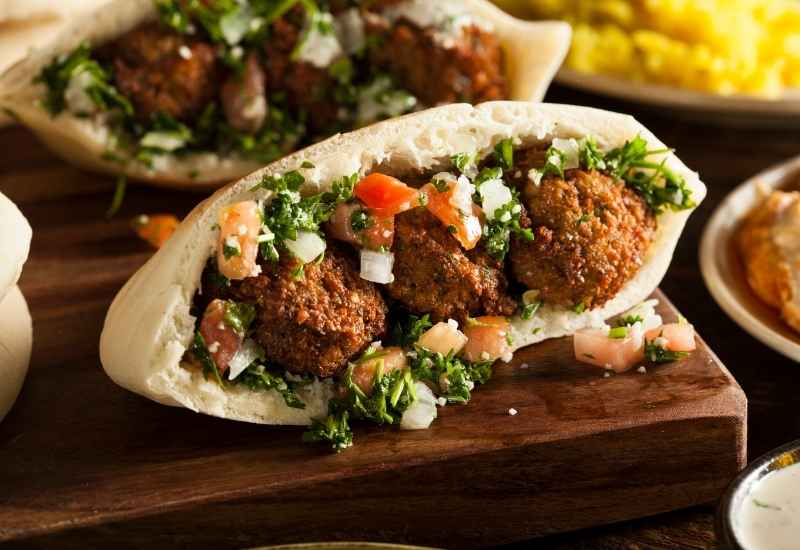
Falafel is a fried ball or patty-shaped fritter generally prepared using ground chickpeas. Other ingredients include coriander leaves, cumin, parsley leaves and flour. Several different kinds of spices and herbs are also added to this dish to make it more flavourful.
Generally consumed for breakfast or lunch, falafels are considered to be filling and nutritious. One can find them being sold almost everywhere in Palestine at very low prices. There are many variations of this dish. Some use fava beans instead of the chickpeas and some recipes include both.
Musakhan
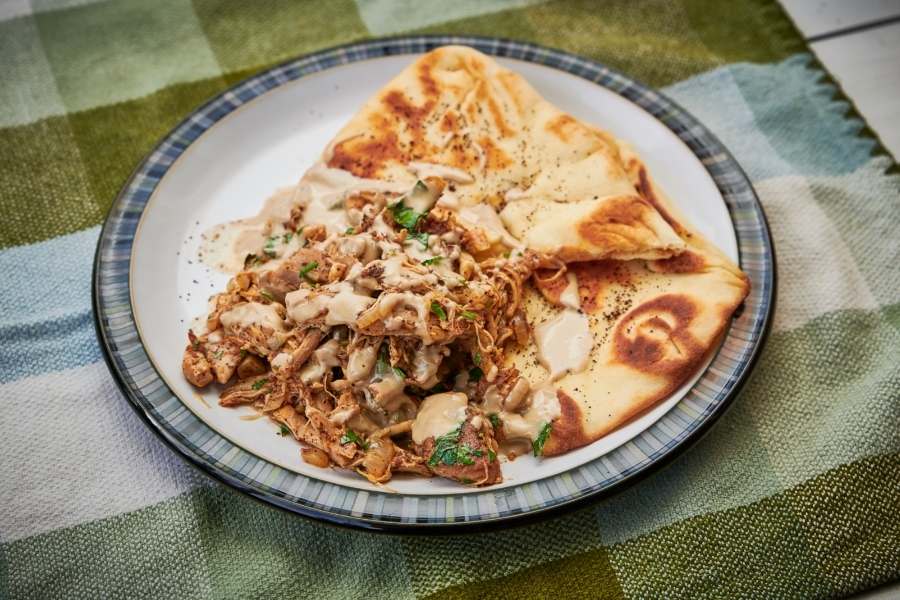
Musakhan is a dish prepared using roasted chicken, aromatic sumac and some other spices. It is typically served with caramelized onion flatbread. This dish is considered to be a perfect comfort food in the region.
Musakhan was traditionally consumed during the olive harvest in October or November. It was considered to be a staple dish to celebrate the olive oil pressing season. However, today, musakhan is consumed throughout the year during family gatherings and more.
Maqluba
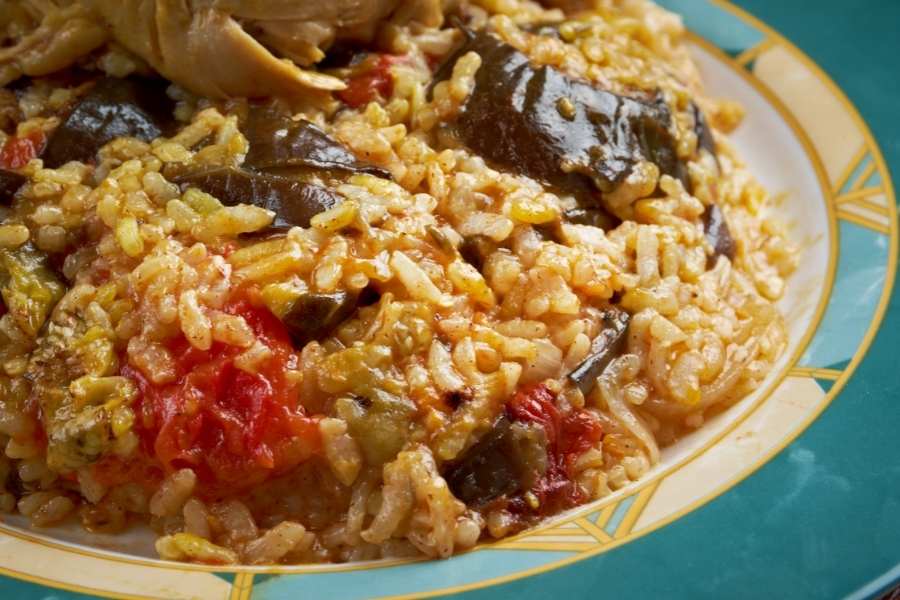
Maqluba is a traditional dish prepared using rice, fried vegetables (including fried tomatoes, potatoes, cauliflower and eggplant) and meat (such as chicken or lamb).
All the ingredients are transferred to a pot and placed in layers. The entire pot is then flipped upside down during the time of serving.
The name maqluba literally means “upside-down”. Different kinds of spices are also added to the dish to enhance its taste. There are also many variations of maqluba that don’t include meat, making it a vegetarian friendly food.
Maqluba is generally garnished with pine nuts and chopped fresh parsley. Occasionally, it is also accompanied by a salad and fresh yogurt. People are often seen cooking it for feasts and large gatherings. As well as Palestinians, people in Iraq, Lebanon, Jordan and Syria also eat maqluba.
Makdous
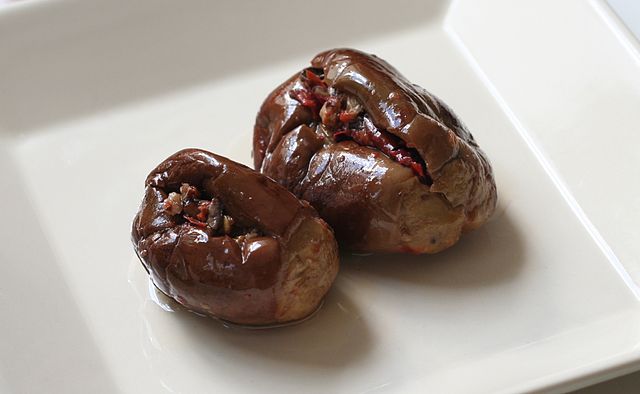
QuasarFrMakdous is a dish prepared using small eggplants blanched, salted and then filled with a combination of crushed nuts, garlic and chili pepper. The stuffed eggplants are then kept for marination in olive oil and finally fermented in a jar.
Makdous is generally consumed for breakfast, but one can also eat it as a mezze for dinner. Often, people eat it as a simple snack or using it as a side dish for other main dishes. One can also use it as stuffing for sandwiches and wraps.
For makdous to stay good for at least a year, it is important to store it in an airtight container, completely covered with oil.
Mujaddara
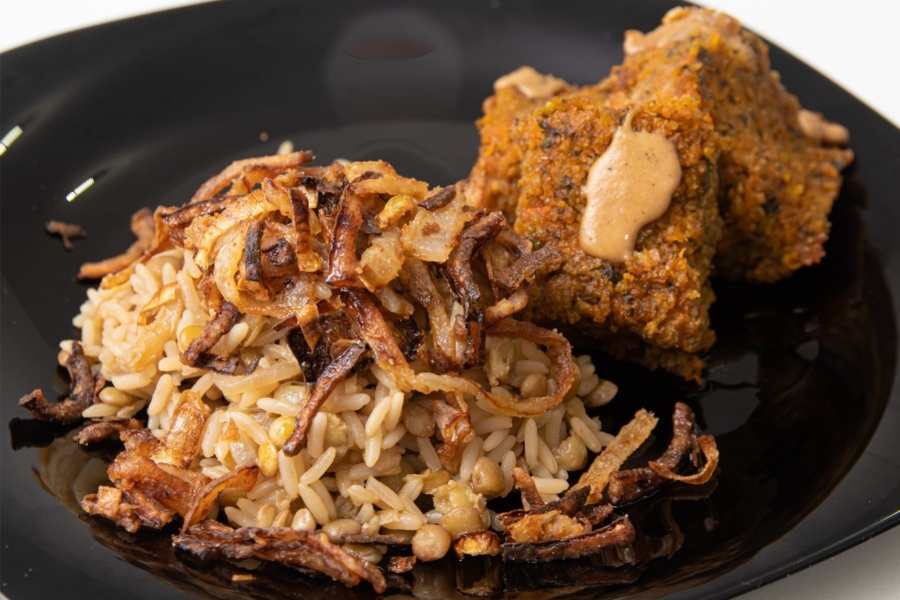
Mujaddara is a layered dish prepared using lentils and rice as the base, followed by caramelized onions placed on top. Several creamy or hot sauces are also added to give a kick to the dish.
Mujaddara is consumed across the Middle East in different forms and is usually low-priced. This healthy, flavorful and filling main dish is generally accompanied by a salad and some yogurt, hummus or tahini sauce.
There are also many different variations of this dish depending on the area it is being prepared in and the ingredients involved.
Kunāfah

Kunāfah is a traditional Middle Eastern sweet dish prepared using spun pastry known as kataifi. Kataifi is immersed in a sweet, sugar-based syrup called attar and is then layered with cheese. Cheese can also be substituted with some other ingredient like clotted cream, pistachio or nuts, depending on the area.
One can find different variations of this dessert in countries like Turkey, Greece and the Balkans.
Mahshi Lift
Mahshi Lift is a dish prepared using stuffed turnips with sumac. Other ingredients include beef, rice, turnip, tamarind paste, and different spices like black pepper, cardamom, cinnamon and cloves.
The rice is soaked in hot water, combined with beef, and flavored with several spices. The turnips are cored and fried, and then the rice and meat mixture is filled inside them. The stuffed turnip is then simmered in a mixture of sumac, tamarind paste, and turnip pulp.
The dish originated in the Hebron region of Palestine. It is suggested to consume the stuffed turnips along with yogurt and lemon or lime slices on the side.
Sujuk
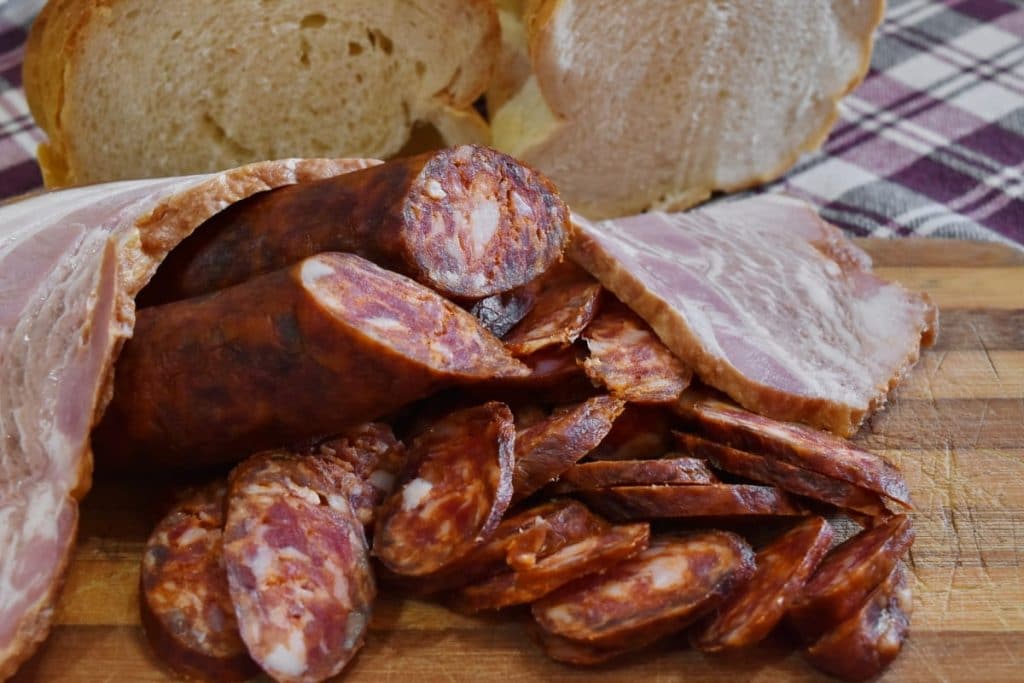
Sujuk is a dry, spiced sausage consumed in countries throughout the Middle East. It is typically made of either beef, lamb or horse meat. It is most popularly eaten for breakfast where it is cut into slices, much like salami and eaten with fried eggs.
Knafeh
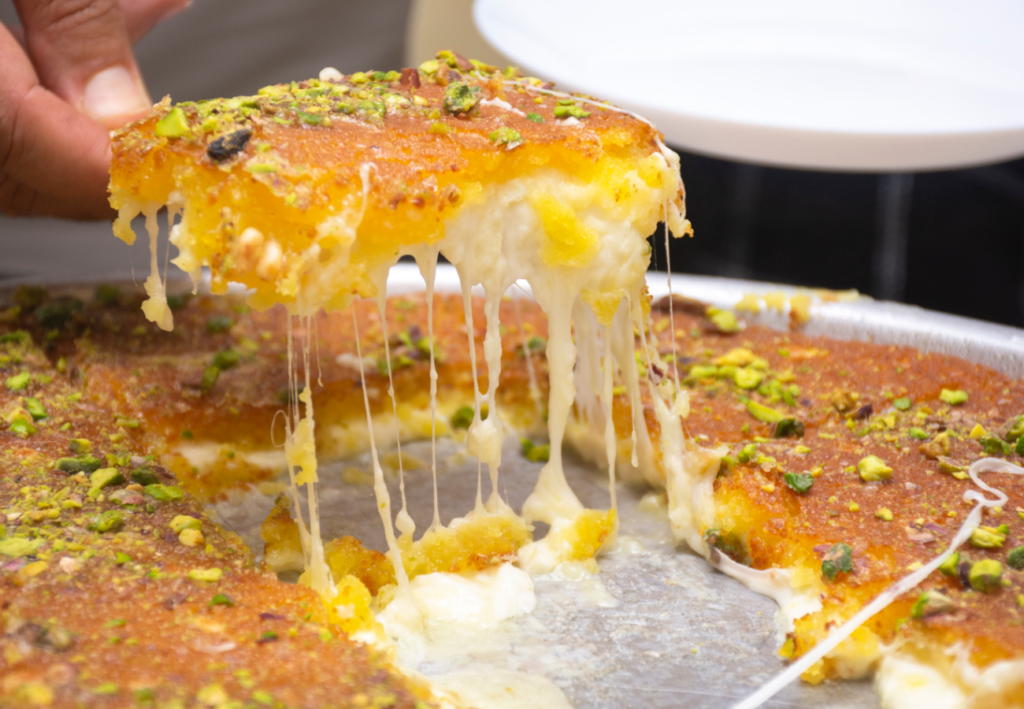
Knafeh is a dessert made of phyllo pastry filled with cream cheese and topped with a sweet syrup.
Akawi cheese is traditionally used to fill knafeh, this is a popular cheese in the Middle East with a consistency similar to mozzarella. The akawi is soaked in water before the dessert is made to remove its slightly salty flavor.
Bamia
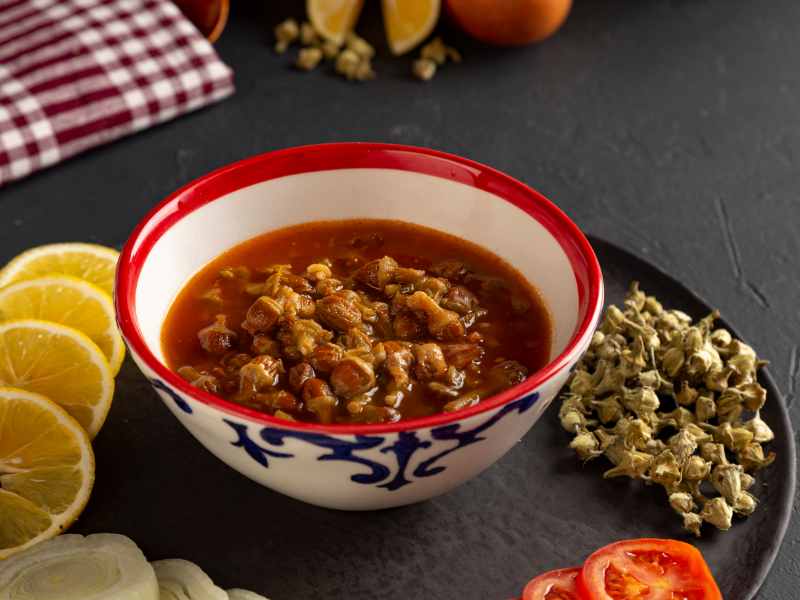
Bamia is an okra and beef stew popular throughout the Middle East. The meat and okra are cooked together with tomato paste, spices, water and pomegranate molasses to name a few of the ingredients. They are stewed in the tomato sauce until the meat becomes tender and the sauce thickens.
Basbousa
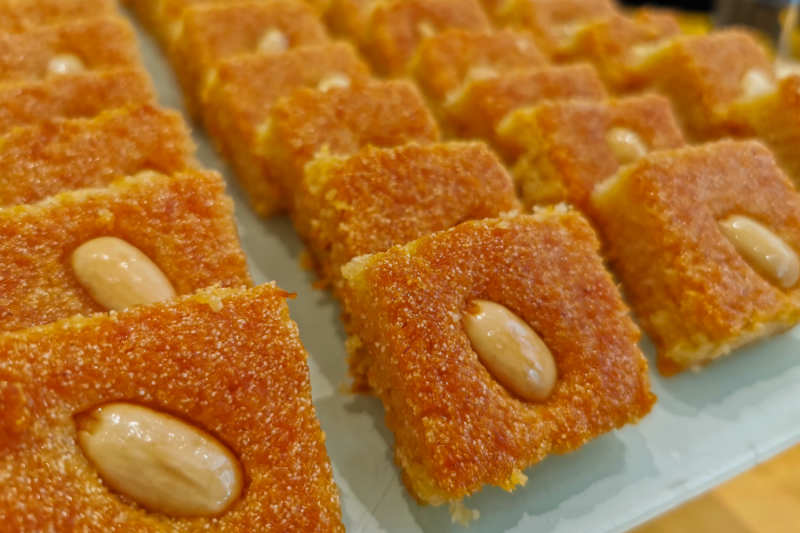
Basbousa is a popular dessert made from semolina that is served in many Middle Eastern and Mediterranean countries. It is infused with syrup and then served with nuts including coconut or almonds.
Fatteh
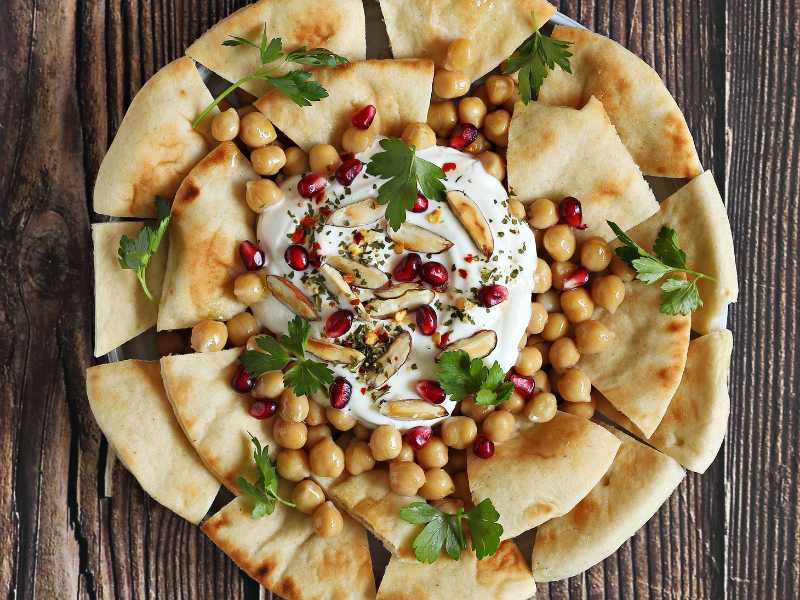
Fatteh is a popular Middle Eastern dish consisting of yogurt, chickpeas, pine nuts and other toppings over flatbread. The flatbread is toasted then topped with generous amounts of spiced chickpeas followed by a layer of plain yogurt, flavored by tahini, lemon juice, garlic and salt.

